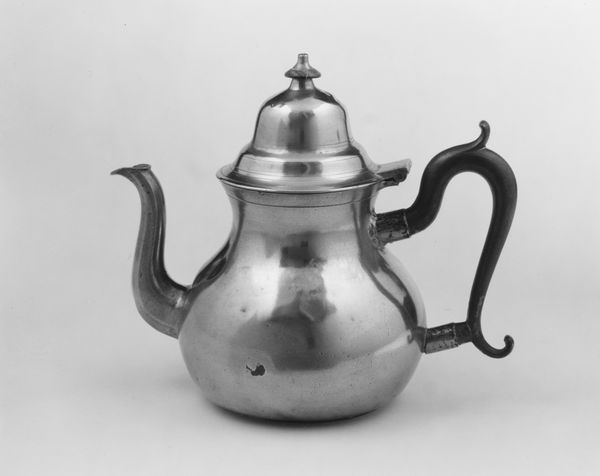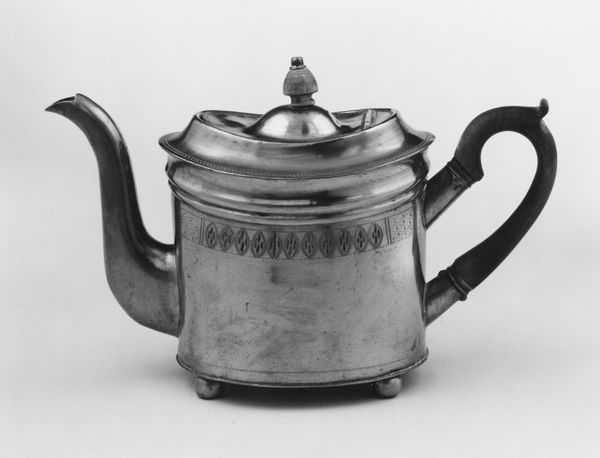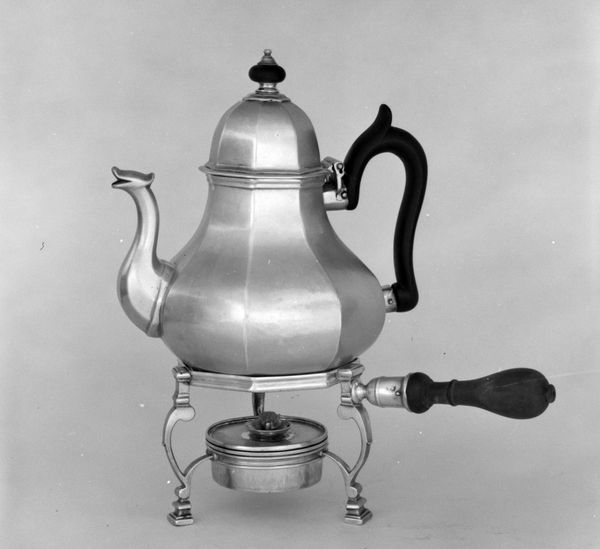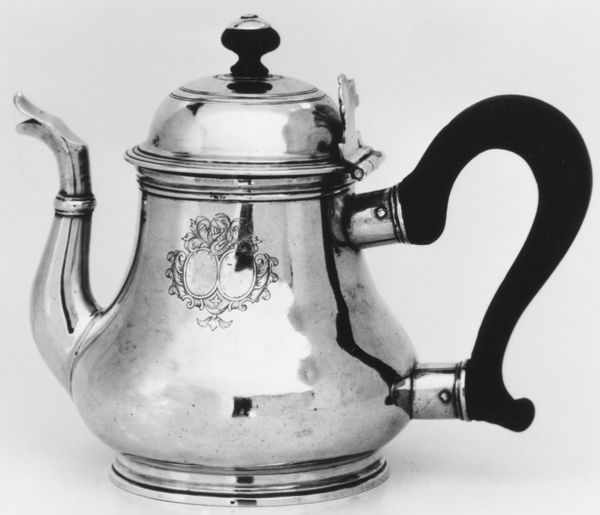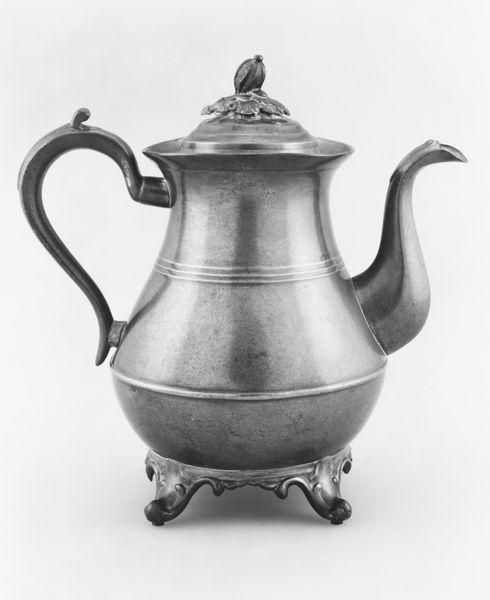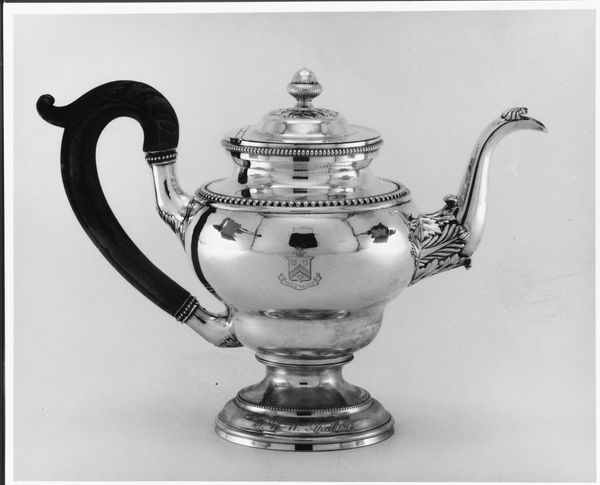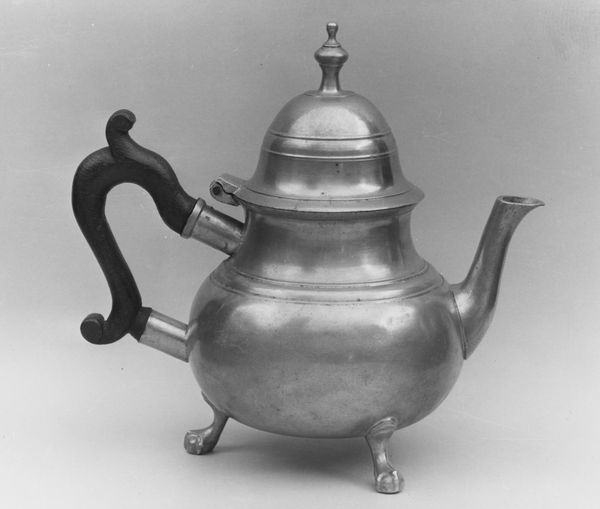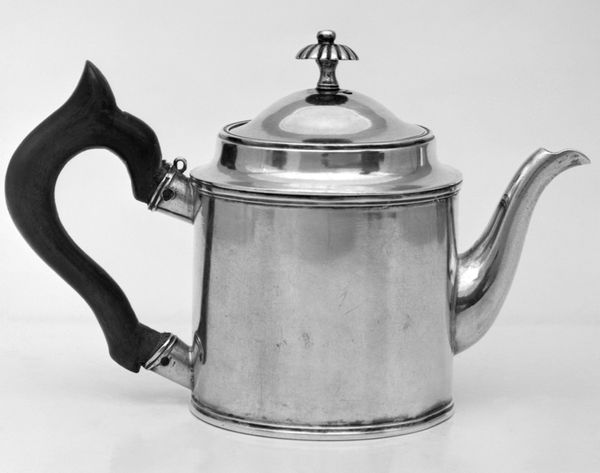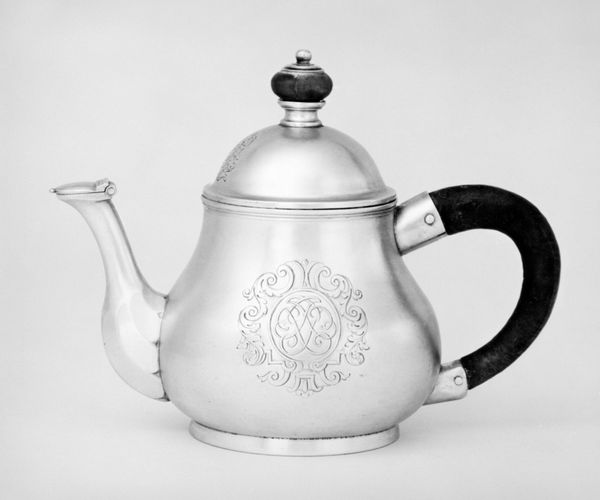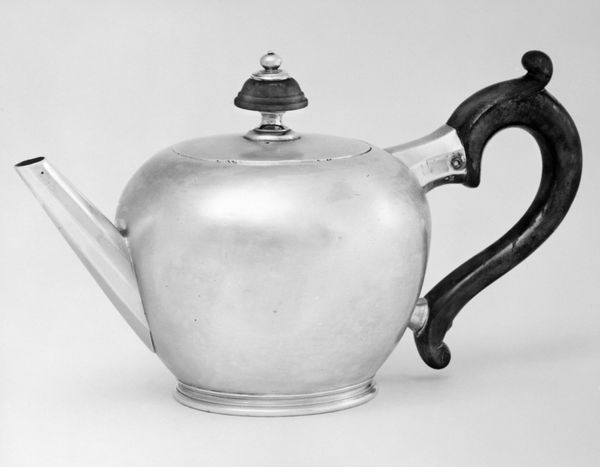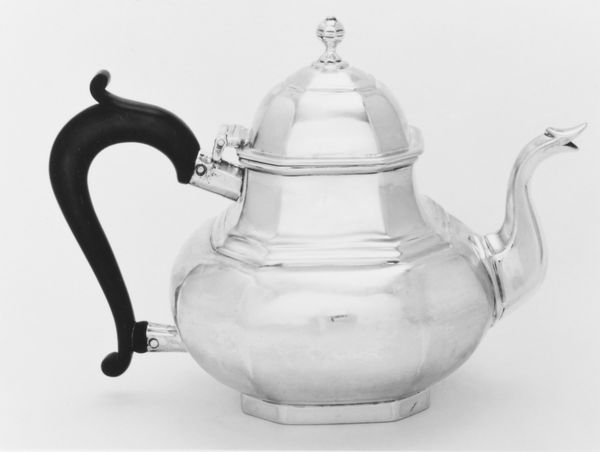
Dimensions: H. 6 3/4 in. (17.1 cm)
Copyright: Public Domain
Editor: So, this is "Teapot," made of metal sometime between 1760 and 1793. The photography, with its stark contrast, gives it this austere quality. What do you make of it? Curator: This teapot, seemingly simple, whispers volumes about colonial America and its complex relationship with Britain. Consider the tea itself: a commodity laden with political weight, the catalyst for the Boston Tea Party and simmering dissent. The very act of crafting such an elegant object amidst revolutionary fervor – what does that tell us about the aspirations and anxieties of the artisans? Editor: That's fascinating. It does seem a bit defiant in its elegance. What about the black and white rendering? Does that inform your reading at all? Curator: Absolutely. The black and white distills the object to its essence, forcing us to consider its form and function outside of any distractions. This teapot transcends mere functionality; it becomes a symbol of social status, economic power, and even resistance. Where did the materials come from, and who had access to them? Were enslaved people involved in their extraction or processing? Editor: That shifts the entire narrative! So, it's less about genteel society and more about the power structures at play? Curator: Precisely. By examining the object through the lens of colonial history and commodity studies, we begin to understand how even the most ordinary items are embedded within larger networks of power, trade, and exploitation. The teapot becomes an artifact not just of consumption, but also of the human cost that underpins its creation and use. Editor: I'll definitely look at functional objects differently now. Thank you. Curator: It’s been a pleasure to see the seeds of critical thinking bloom. This object has certainly helped me clarify my own positions.
Comments
No comments
Be the first to comment and join the conversation on the ultimate creative platform.
